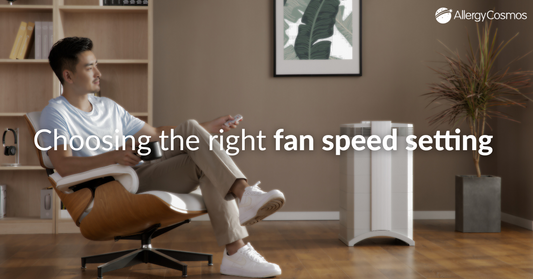Indoor air pollution can be a real health issue - worsening asthma and allergy symptoms, increasing the risk of heart disease and even decreasing live expectancy. HEPA filtration provides the best results in an air cleaner, so it makes sense to ask what to look for in a HEPA air purifier?
A good air purifier should be an air purifier with a high filtration efficiency, as you could be breathing in remains from house dust mites (in dust), pet dander, viruses, pollen, bacteria, volatile organic compounds and smoke particles - to name but a few. All of these are considered particle air pollution. For the most part, these particles are invisible to the naked eye. Using an air purifier is an effective way of reducing indoor air pollution and you may find that your asthma and allergy symptoms improve as a result. I say 'might' because it is essential that you know what kind of air pollution you want to filter out of the air and choose the right air purifier to do so. The most effective filtration technology for particulate pollution (such as dust mite allergens, pollen, a large range of traffic pollution, and mould) is high-efficiency particulate air (HEPA) filtration.
HEPA filtration was initially developed over 50 years ago to remove radioactive particles from the air during the prestigious Manhattan Project. An average indoor air purifier with a HEPA filter should remove 99.97% of airborne particle pollution down to 0.3-micron diameter. Unfortunately, most HEPA air purifiers are poorly built, so that not all the air that passes through the air purifier also passes through the HEPA filter. So when choosing an air purifier you should ask what the filtration efficiency of the air purifier as a whole is, not just the filtration efficiency of the filter by itself. The particulate size that a HEPA air cleaner filters out of your indoor air matters, because the ultra-small particulate size range is known to cause the most severe health problems. Particles of that size pass by our bodily's natural defences and can reach every organ. A HEPA air cleaner has a filter that is made of borosilicate fibre matting, pleated to create a big surface area to trap more particles. The action of the filter is threefold:
- Larger particles are trapped by inertial impaction. Because they are larger, they keep on moving until they hit a fibre and then they stick to it.
- Medium particles are trapped by interception. When they pass near a fibre, they are intercepted by the fibre and stick to it.
- The smaller particles are trapped by diffusion. They collide with other particles and eventually get knocked on to a fibre, where they stick.
Some HEPA air cleaners use a pre-filter, which removes larger particles before the air enters the filter properly. This allows the main filter to concentrate on getting rid of the smaller particles and does not get clogged up with larger ones. Some HEPA air purifiers combine the HEPA filter with an activated carbon filter - for the removal of gases and odours. If you decide to purchase a HEPA air purifier, go for one that is medical-grade, and that is sold by a reputable and authorised supplier. You should shop wisely for your air purifier to reap the best benefits in short term and long term health effects. Consider how often you will have to change the filter and how much air the home air purifier can clean in an hour. As a rule of thumb, your air cleaner should filter the air in your room at least 2-3 times per hour. The use of an effective air purifier will help to:
- protect you from getting sick (by filtering out bacteria and viruses),
- control your allergy and asthma symptoms (by taking particle and gas pollution out of the air),
- keep your home and your sinuses clean (by taking the general dust out of the air)
But a HEPA air cleaner can also improve your cardiovascular health. A recent study measured microvascular function and indoor air particle levels in the homes of 21 couples aged 60 to 75 living near heavy traffic. The microvascular function is a way of assessing the state of the inner lining of the blood vessel. If abnormal, it is a known risk factor for heart disease. The couples used a HEPA filter for two days, had their tests, then ran the device without a filter and had the tests repeated. Use of the filter removed 60% of particles and improved microvascular function by 8% - more than the researchers were expecting.




